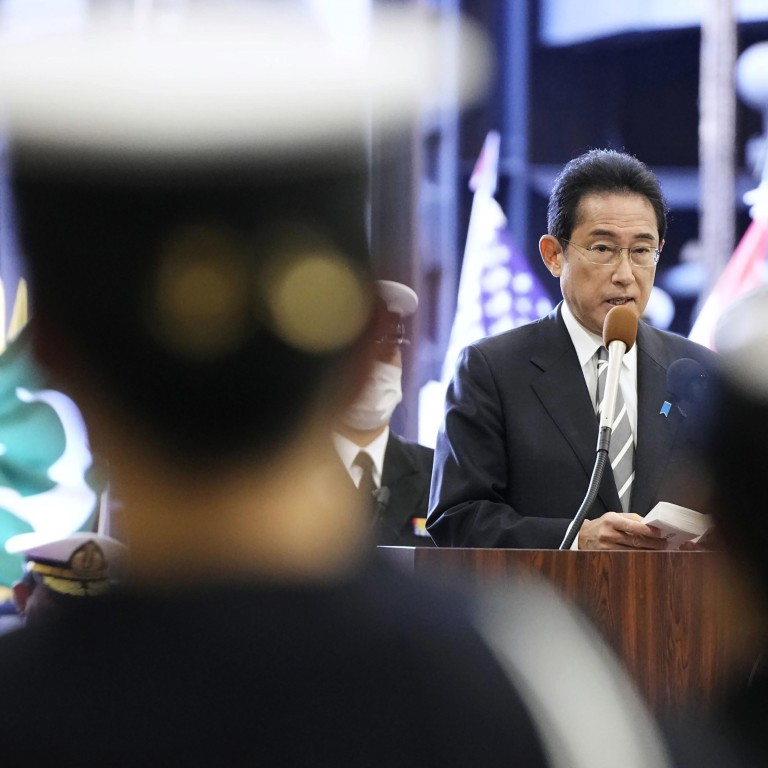
Japan aims to boost five-year defence spending by 50 per cent, to US$318 billion
- The amount will be 1.5 times the current levels, as Japan eyes defence build-up including the use of pre-emptive strikes
- But with an ageing, declining population already struggling with a bulging national debt, funding the increase will not be easy
The planned increase is “to firmly secure the necessities to pursue substantial reinforcement” of Japan’s defence, Hamada said.
Is China the target of Japan’s record-busting defence budget?
Kishida’s government is currently finalising a revision of its national security strategy and mid- to long-term defence policies, which would allow the use of pre-emptive strikes in a major shift to Japan’s self-defence-only post-war principle. Critics say pre-emptive strikes could violate Japan’s pacifist constitution. The government says a “strike-back” capability is only for use in case of an imminent enemy attack.
The three key documents and the budget are expected in late December.

A government-commissioned experts’ panel, in a report last month, said Japan needs to urgently reinforce its deterrence including by adding cruise missiles, interceptors and other equipment while improving commercial ports and airports for emergency military use.
As China ages, does Japan hold lessons for its shrinking workforce?
Kishida’s plan apparently came as a compromise between the governing Liberal Democratic Party’s initial request of 48 trillion yen (US$355 billion) for the coming five years and the Finance Ministry’s proposal of 35 trillion yen (US$260 billion).
Plans for Japan’s military build-up and spending increase also are a sensitive issue for many of its neighbours, including the two Koreas, which were victims of Japanese aggression in the first half of the 1900s.

